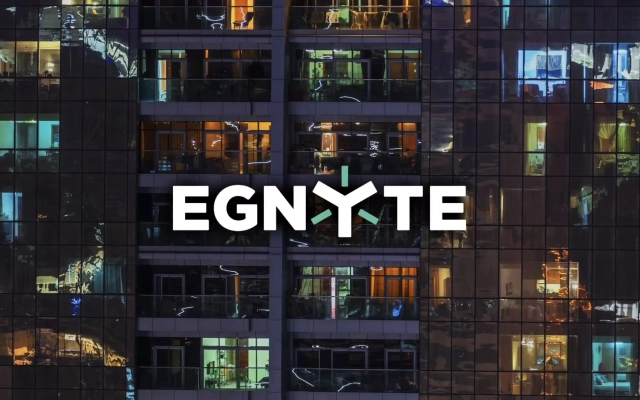What Is Cryptojacking? Prevention, Detection, and Recovery
Cryptojacking has become one of the quietest yet most expensive security problems for modern organizations, with incidents rising by 659% during 2023. Instead of stealing data, attackers steal processing power by slipping hidden mining scripts into systems, cloud workloads, and even everyday browsers. The result is slower performance, higher bills, and reduced visibility across critical operations.
As cryptojacking campaigns grow more advanced, teams need clear guidance on what it is, how it spreads, and how to defend against it. This guide explains the threat in simple terms and outlines practical steps for prevention, detection, and recovery, supported by strong governance practices and structured monitoring.
Let’s jump in and learn:
- TL;DR: What Is Cryptojacking: Prevention & Recovery
- What Is Cryptocurrency?
- What Is Cryptomining?
- What Is Cryptojacking, and How Does It Work?
- Three Types of Cryptojacking and Real-World Examples
- Cryptojacking Prevention: Protecting Systems
- Cryptojacking Detection: What to Look For
- Cryptojacking Recovery Tactics
- Avoid Cryptojacking by Being Aware
- Conclusion
- Frequently Asked Questions:
TL;DR: What Is Cryptojacking: Prevention & Recovery
- Cryptojacking is the silent misuse of systems to mine cryptocurrency without permission. It drains processing power, clouds visibility, and weakens operational workloads.
- Detecting strange CPU spikes, unexplained cloud bills, or network traffic to mining pools remains the most reliable early warning.
- Prevention depends on disciplined governance, continuous monitoring, hardened workloads, controlled access, and structured oversight across data and identities.
- Recovery requires containment, cleanup, patching, and reinforced policy. Strong programs use an integrated governance layer supported by IDS and centralized oversight.
What Is Cryptocurrency?
Cryptocurrency is a digital form of money recorded on distributed ledgers known as blockchains. These networks rely on thousands of independent participants to validate transactions. Validation requires significant computing effort, and that effort is rewarded with newly created coins. This model is the reason attackers try to steal processing power. Instead of buying hardware or paying for electricity, they quietly shift the cost onto someone else.
What Is Cryptomining?
Cryptomining is the computational work that records and confirms transactions on blockchains. Miners use hardware to solve mathematical puzzles that secure the network. For legitimate miners, the cost of power and hardware defines the profit margin. For attackers, the profit margin is much higher because the resources they use belong to someone else.
What Is Cryptojacking, and How Does It Work?
Cryptojacking happens when a threat actor installs or injects mining scripts into systems they do not own. Instead of stealing data, they steal compute capacity. The miner runs quietly in the background.
Cloud servers, virtual machines, browsers, containers, and even mobile devices are frequent targets. Attackers prefer environments with predictable uptime because they can mine uninterrupted for long periods without raising suspicion.
How Cryptojacking Scripts Spread
Scripts and binaries reach systems through several routes:
- Misconfigured DevOps tools: Open Docker daemons, exposed Kubernetes dashboards, insecure Terraform or Jenkins setups, and weak API protections are prime targets.
- Unpatched public applications: Attackers scan for outdated CMS plugins, file transfer apps, analytics dashboards, or vulnerable web servers. Once inside, they drop mining binaries quickly.
- Script injection: Attackers compromise websites and inject JavaScript miners so visitors unknowingly donate CPU cycles when loading a page.
- Malvertising: Fake installers or poisoned search results lead users to download programs that launch miners upon execution.
Three Types of Cryptojacking and Real-World Examples
The types of cryptojacking differ, but the goal is always to harvest computing power without permission.
Cryptojacking Prevention: Protecting Systems
Building effective prevention starts with structured governance. Cryptojacking thrives on misconfigurations, lax identity control, and limited visibility, which means organizations need steady control across their data, workloads, and access paths.
Governance and oversight:
- Use clear asset inventories and classify data. Strong programs rely on firm boundaries, which is where information governance becomes valuable.
- Enforce central policies around data retention, access review, and configuration baselines through data governance solutions.
Identity and access management:
- Limit administrative roles, rotate credentials often, and require multifactor authentication across cloud consoles and DevOps platforms.
- Remove unused service accounts and ensure that all automation paths are authenticated.
System hardening:
- Patch high-risk applications quickly. Lock down container orchestration platforms, turn off anonymous access for APIs, and define guardrails for image registries.
- Apply egress controls that block outbound traffic to known mining pools.
Network and monitoring:
- Deploy Intrusion Detection Systems (IDS) that detect mining traffic signatures.
- Filter mining domains at DNS, monitor for unusual bandwidth spikes, and log user activity.
- Use behavioral monitoring that flags CPU and memory changes across workloads.
User protection:
- Train employees to avoid unauthorized downloads.
- Review browser extensions regularly, especially in development teams that install multiple tools for testing.
Cryptojacking Detection: What to Look For
Cryptojacking often leaves a predictable footprint. The following signs of cryptojacking stand out:
Cryptojacking Recovery Tactics
When you confirm a cryptojacking attack, work through a clean and contained sequence:
- Contain: Isolate affected endpoints or nodes from the network. Block mining domains at DNS and firewall layers.
- Eradicate: Remove miners, watchdogs, crontabs, and persistence scripts. Rotate credentials and tokens that the attacker may have captured. Rebuild cloud instances from trusted images.
- Harden: Patch the exploited application or fix the misconfiguration. Restrict management APIs and require multifactor authentication for all privileged paths.
- Validate: Use an IDS and telemetry to confirm no mining traffic remains. Review logs for lateral movement.
- Recover: Restore degraded services. Monitor for at least one full business cycle. Update runbooks and training to reflect what you learned.
Avoid Cryptojacking by Being Aware
Cryptojacking is not as visible as ransomware or data theft, but it is disruptive. It impacts performance, budgets, and reliability. Security teams operate better when they understand how miners behave, how infrastructure is targeted, and how governance influences resilience.
Awareness supports every layer of defense. Understanding the threat landscape can help allocate resources correctly, build stronger controls, and reinforce daily operations with clear oversight.
Conclusion
Cryptojacking shifts the cost of mining onto organizations and reduces the performance of every affected system. A guided approach to governance, configuration, and monitoring closes many of the gaps that attackers depend on.
Egnyte helps organizations stay ahead of these threats by bringing governance, access control, and continuous monitoring into one unified environment. Its cloud data governance tools surface anomalies early, protect sensitive workloads, and keep data organized under clear policies. It helps you strengthen readiness across endpoints, cloud services, and shared repositories.
Frequently Asked Questions:
Q. How can cryptojacking scripts be blocked?
Block exposed dashboards, enforce MFA, patch public services, filter outbound mining traffic, and rely on IDS alerts for suspicious commands.
Q. How do you know if you have been cryptojacked?
Sustained CPU use, slow CAD activities, cloud scaling without cause, unknown binary names, and network traffic toward mining pools.
Q. What should I do if I discover cryptojacking on my system?
Isolate the system, gather evidence, remove the miner, patch the exploited service, rotate credentials, and review logs and costs.
Q. How can cryptojacking impact businesses and organizations?
It increases cloud spending, slows critical workflows, disrupts coordination schedules, and creates new openings for intrusions.
Q. Can cryptojacking affect mobile devices?
Yes. Mobile devices running compromised applications or browser scripts can mine, causing heat, battery drain, and poor performance.
Additional Resources

Egnyte Data Security & Governance
Discover, protect and govern your sensitive business data — across cloud or on‑prem — with Egnyte.

Ransomware Detection & Recovery
Detect, block and recover from ransomware threats — automatically and swiftly.

The Egnyte Platform
Centralise, protect and manage all your business content with Egnyte.